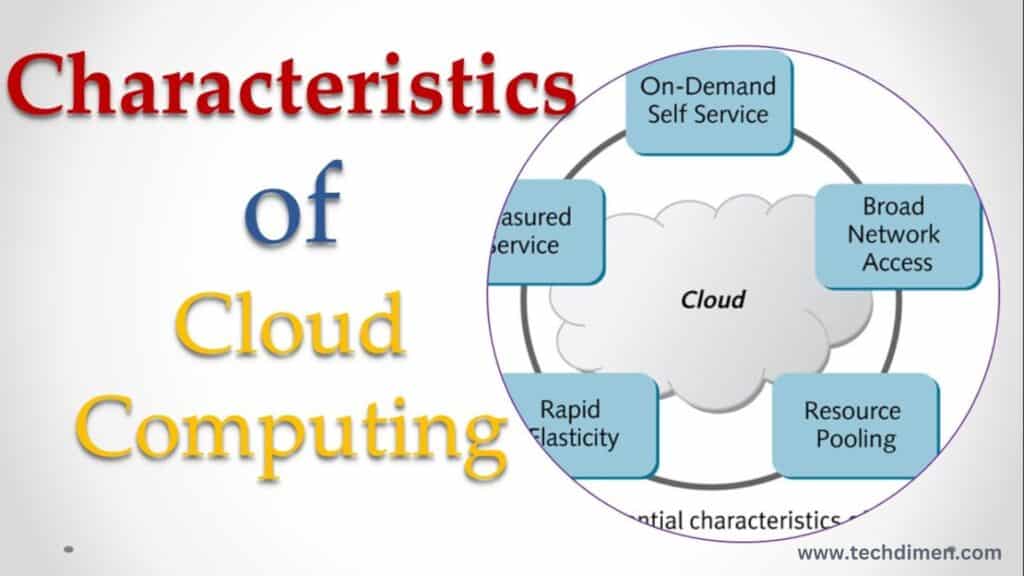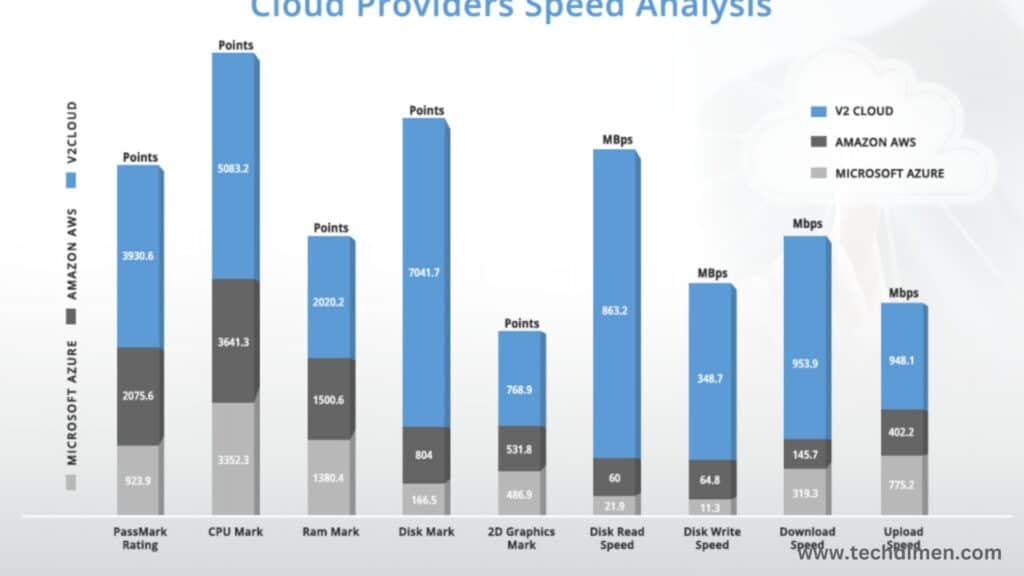cloud technology ppt is transforming how organizations access, manage, and scale IT resources. Instead of relying on local servers, businesses now tap into computing power over the internet to store data, run applications, and deliver services. This approach boosts flexibility, reduces costs, and enhances operational efficiency across all sectors.
What Is cloud technology ppt?

Cloud technology, also known as cloud computing, refers to the delivery of computing services including servers, storage, databases, networking, software, and analytics over the internet. These services allow users to access and manage resources remotely, with providers managing the infrastructure and platforms.
This model enables on demand resource allocation, rapid scalability, and pay as you go pricing. The shift from traditional infrastructure to cloud platforms allows businesses to remain agile in fast changing markets.
Key Characteristics of Cloud Computing

On demand self service lets users access computing resources automatically, without requiring human interaction with the provider. Broad network access ensures services are available across devices and locations. Resource pooling means providers use multi tenant models to serve multiple customers from a shared pool of resources. Rapid elasticity allows users to scale resources up or down dynamically. Measured service ensures that resource usage is tracked, controlled, and billed accordingly.
Cloud Service Models, cloud technology ppt
Infrastructure as a Service (IaaS)
IaaS provides virtualized physical computing resources over the internet. It gives users fundamental building blocks like virtual machines, storage, and networks. Amazon EC2, Microsoft Azure VMs, and Google Compute Engine are popular examples. IaaS is suitable for businesses needing maximum flexibility without investing in hardware.
Platform as a Service (PaaS)
PaaS delivers a platform for developers to build, test, and deploy applications. It abstracts the underlying infrastructure and provides environments with pre configured tools. Microsoft Azure App Services and Google App Engine are well-known PaaS platforms.
Software as a Service (SaaS)
SaaS enables users to access software applications via a web browser. These applications run on cloud infrastructure managed by the provider. Examples include Google Workspace, Salesforce, and Dropbox. SaaS eliminates the need for installations and reduces maintenance costs.
Cloud Deployment Models
Public Cloud
Public cloud services are delivered over the internet and shared across multiple clients. These are cost effective and scalable, ideal for startups and enterprises looking for flexibility. Providers like AWS, Azure, and GCP dominate this space.
Private Cloud
Private clouds are dedicated to a single organization, offering greater control and security. They can be hosted on premises or by third-party vendors. This model is preferred by businesses with strict compliance requirements.
Hybrid Cloud
Hybrid cloud blends public and private environments, enabling data and applications to move between them. It offers a balance between control and scalability, ideal for businesses managing sensitive data while benefiting from public cloud agility.
Community Cloud
Community clouds serve specific groups with shared concerns like compliance or security. Industries such as healthcare or government commonly adopt this model.
Benefits cloud technology ppt

Cloud computing provides clear business advantages. It reduces capital expenditures and operational costs by replacing on-site infrastructure with cloud-based services. Scalability and elasticity ensure businesses can handle variable workloads efficiently. Cloud disaster recovery solutions enhance resilience, while global collaboration becomes easier through real-time data sharing and cloud based tools.
Cloud based infrastructure also promotes sustainability by reducing the carbon footprint, aligning with green IT initiatives.
this World Applications of cloud technology ppt Services
Cloud technology supports various use cases. Data storage and backups become more reliable and scalable. Big data analytics gain power and speed using platforms like AWS Redshift and Google BigQuery. AI and machine learning models are trained faster through cloud services such as Azure ML and Google AI Platform.
Cloud also enables DevOps with continuous integration and deployment pipelines. IoT systems rely on cloud infrastructure to process data in real time. Industries from finance to healthcare use cloud to improve efficiency and service delivery.
Security and Compliance in Cloud Environments
Security in the cloud is a shared responsibility between the provider and the user. Key concerns include data breaches, account hijacking, and insecure APIs. Providers offer tools like encryption, identity and access management, and security monitoring to mitigate these risks.
Regulations like GDPR and HIPAA require strict data protection, and major providers ensure compliance through certifications and built in controls. Implementing best practices such as multi factor authentication, regular audits, and strict access policies is essential.
Leading Cloud Providers

Amazon Web Services (AWS) remains the most comprehensive provider, with services like EC2, S3, and Lambda. Microsoft Azure appeals to enterprises with tools such as Azure DevOps and Azure Active Directory. Google Cloud Platform is known for its machine learning capabilities and high performance analytics.
Other key players include IBM Cloud, focused on AI and hybrid strategies, and Oracle Cloud, which provides strong support for enterprise databases and applications.
Emerging Trends in Cloud Technology
Edge computing processes data closer to its source, minimizing latency for applications like IoT and autonomous systems. Serverless computing allows developers to focus on code while the cloud provider manages infrastructure, leading to more efficient resource usage.
Multi cloud strategies are gaining traction as organizations seek flexibility and avoid vendor lock in. AI and automation are deeply integrated into cloud platforms, improving performance, reducing costs, and enabling smarter decision-making.
Sustainability is also a growing concern. Providers are investing in renewable energy and optimizing data center efficiency to create green cloud solutions.
cloud technology ppt Models Comparison Table
| Feature | IaaS (Infrastructure as a Service) | PaaS (Platform as a Service) | SaaS (Software as a Service) |
|---|---|---|---|
| User Control | Full control over infrastructure | Control over applications only | No control, just use the software |
| Managed By Provider | Networking, storage, servers | Runtime, middleware, OS, hardware | Everything (app, data, OS, infrastructure) |
| Customization | High | Moderate | Low |
| Scalability | High | High | High |
| Use Case | Hosting, storage, virtual machines | App development, analytics | CRM, email, office tools |
| Examples | AWS EC2, Google Compute Engine | Google App Engine, Azure App Service | Google Workspace, Salesforce, Dropbox |
FAQs
What is cloud technology in simple terms?
Cloud technology allows users to access computing resources such as storage, processing power, and software over the internet instead of relying on local servers or personal computers. Essentially, users rent computing infrastructure or software services hosted in data centers managed by cloud providers like Amazon Web Services, Microsoft Azure, or Google Cloud.
How does cloud computing work?
Cloud computing functions through the use of virtualization. Cloud providers maintain extensive data centers equipped with physical servers, which are divided into virtual machines. These virtual machines allow users to run applications and store data remotely. The entire process is accessed over the internet, and users typically pay based on usage, similar to a utility service model.
What are the main types of cloud service models?
Cloud computing operates under three core service models. Infrastructure as a Service, or IaaS, offers virtualized computing infrastructure including servers, networks, and storage. Platform as a Service, known as PaaS, provides a framework for developers to build, test, and deploy applications without managing the underlying hardware. Software as a Service, or SaaS, delivers software applications via the internet, where users simply log in and use the tools without installation or maintenance.
What is the difference between public, private, and hybrid cloud?
A public cloud is operated by third party providers and delivers services over the open internet, making it cost effective and scalable. In contrast, a private cloud is a proprietary infrastructure operated solely for a single organization, offering enhanced control and security. A hybrid cloud combines both public and private environments, allowing data and applications to be shared between them to maximize flexibility and deployment options.
Is cloud computing secure?
Cloud computing can be highly secure if best practices are followed. Major providers invest heavily in security infrastructure including encryption, access control, and compliance certifications. However, users are responsible for configuring their environments properly. Security also depends on factors such as user access management, secure APIs, and regular audits.
What are some this world applications of cloud technology ppt?
Cloud technology supports a wide range of practical uses. It is used for backing up and storing large volumes of data, running powerful data analytics workloads, and supporting artificial intelligence and machine learning applications. It also underpins popular consumer services like video streaming, cloud gaming, and real-time collaboration platforms used in remote work settings.
Why are businesses migrating to the cloud?
Organizations are increasingly adopting cloud computing because it offers cost savings, operational flexibility, and faster innovation cycles. By reducing the need for on-premises infrastructure, companies can scale services on-demand and respond quickly to changing market conditions. It also improves collaboration by enabling access to systems from anywhere with an internet connection.
What is server less computing?
Server less computing is a cloud execution model where developers write code and the cloud provider automatically handles the infrastructure management. It simplifies deployment by abstracting away the server layer. With server less architecture, applications scale automatically and users are charged only for the actual execution time of their code. AWS Lambda is one of the most widely used server less platforms.
What are the risks of using cloud technology ppt?
Despite its advantages, cloud computing poses several risks. These include data breaches due to poor security configurations, potential downtime if services fail, and challenges related to vendor lock-in, where switching providers becomes technically or financially difficult. Organizations must also navigate complex compliance landscapes depending on the industry and location of data storage.
Who are the top cloud service providers?
The leading players in the cloud services market include Amazon Web Services, which dominates with a wide range of IaaS and PaaS offerings. Microsoft Azure is also prominent, particularly among enterprise customers. Google Cloud Platform is known for its data and machine learning services. Other significant providers are IBM Cloud, Oracle Cloud, and Alibaba Cloud, which cater to specific regional and industry niches.
Can cloud computing save money?
Yes, cloud computing can significantly reduce costs by eliminating the need for capital expenditure on hardware and ongoing maintenance expenses. Companies only pay for the resources they use, which helps manage operating costs more effectively. This pay-as-you-go model benefits startups and enterprises alike by offering predictable, scalable costs.
What industries benefit most from cloud technology ppt?
Cloud technology ppt delivers value across a wide range of industries. In healthcare, it enables secure data sharing and AI-powered diagnostics. In finance, it supports high-speed trading, fraud detection, and compliance. Education institutions use the cloud for virtual learning platforms and content management. Retailers rely on cloud infrastructure for e-commerce, inventory, and customer personalization, while media and entertainment companies leverage the cloud for streaming and content distribution.
Conclusion
Cloud technology ppt is the backbone of modern IT infrastructure. From small businesses to multinational corporations, its impact is vast and growing. Understanding cloud models, service types, deployment strategies, and emerging trends equips you to leverage its full potential.
Whether you’re preparing a PowerPoint presentation or implementing a cloud migration strategy, knowledge of cloud technology is crucial for navigating today’s digital landscape. As cloud services evolve, staying informed will be the key to maintaining competitive advantage.

Jhon AJS is a tech enthusiast and author at Tech Dimen, where he explores the latest trends in technology and TV dimensions. With a passion for simplifying complex topics, Jhon aims to make tech accessible and engaging for readers of all levels.







